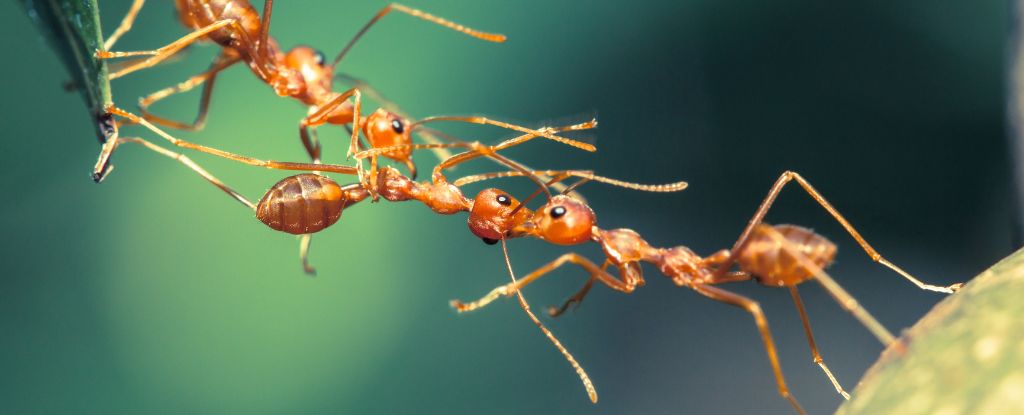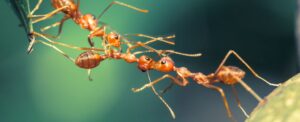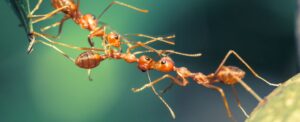
A recent study has revealed that weaver ants exhibit a remarkable ability to work together efficiently, defying a well-known phenomenon called the Ringelmann effect. This effect, named after French engineer Max Ringelmann, describes how individuals in a group often contribute less effort as the size of the team increases. The findings, published in the journal Current Biology, highlight the unique teamwork strategies employed by these ants, suggesting they may serve as models for improving collective efforts in various fields, including robotics.
Weaver ants, known scientifically as Oecophylla smaragdina, are renowned for their ability to construct nests in trees by pulling leaves together and binding them using silk produced by their larvae. The researchers aimed to determine whether weaver ants fall victim to the Ringelmann effect during their collaborative efforts. To investigate this, they set up experiments where the ants were encouraged to form chains to pull an artificial leaf attached to a force meter, allowing for real-time monitoring of their combined force output.
As the researchers anticipated, the total pulling force increased with more ants joining the chain. However, contrary to expectations, the force exerted per individual also increased, indicating that weaver ants became more effective as their numbers grew. This finding positions weaver ants as “superefficient” in their teamwork capabilities, a stark contrast to the performance trends seen in many other animal groups.
### Understanding the Mechanism
The study outlined how weaver ants achieved this enhanced efficiency. The key was not simply the number of ants involved, but how they arranged themselves. The ants performed optimally when forming a single long chain rather than several shorter ones. Observations revealed that the posture of the ants varied based on their position in the chain. Rear ants stretched their hind legs to resist the counter-force of the leaf, while those at the front took a crouched stance, exerting active pulling force.
This behavior led researchers to propose a concept termed the “force ratchet.” In this model, the weakest link in the pulling chain is not the connections between the ants but rather their grip on the ground. When pulling alone, an ant’s maximum force can be limited by slippage. In a chain configuration, the rear ants provide passive resistance, enhancing ground contact and reducing slippage, thereby allowing the front ants to exert greater force.
### Implications for Robotics
The implications of this research extend beyond the natural world. In the field of autonomous robotics, teams of small robots are designed to work together to accomplish tasks beyond the capabilities of individual units. Current robotic teams often achieve linear scaling, where doubling the number of robots merely doubles the output force. While this suggests that they do not suffer from the Ringelmann effect, they also do not demonstrate the super-efficiency shown by the weaver ants.
By adopting strategies inspired by weaver ants, such as the force ratchet mechanism, robotic systems could potentially enhance their collaborative performance. This research opens new avenues for improving the effectiveness of swarm robotics and challenges the conventional understanding of teamwork efficiency.
The study conducted by Chris R. Reid, an ARC Future Fellow at Macquarie University, and Daniele Carlesso, a Postdoctoral Fellow at the Max Planck Institute of Animal Behavior, presents a fresh perspective on collective action in the animal kingdom. As researchers continue to explore the intricacies of teamwork, these findings underline that sometimes, when it comes to collaboration, more is indeed better.







